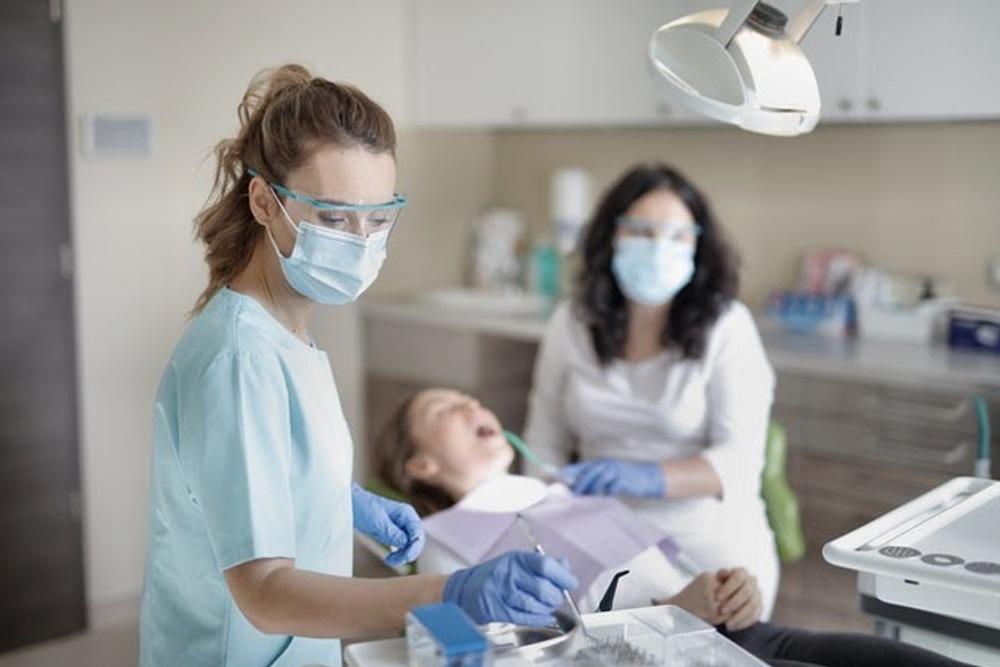- Botox is still the dominant non-surgical aesthetic procedure, with plastic surgeons performing 6.2 million Botox procedures annually worldwide and 3.6 million in the US alone. The average cost of a single Botox procedure is $409, and regular Botox patients undergo the treatment every four months. Practitioners inject between 10 and 30 units of Botox per appointment, depending on the area and the patient’s age (1).
- The dental industry is gearing up for major technological progress, with trends like AI-powered imaging tools, tele dentistry, and 3D printing (2). These technologies are expected to improve the accuracy, efficiency, and convenience of dental care, as well as expand the scope of services that dentists can offer. For example, 3D printing can be used to create customized dental implants, crowns, and bridges, while AI can help with diagnosis, treatment planning, and outcome prediction.
- The global botulinum toxin market size was valued at USD 7.23 billion in 2022 and is projected to reach USD 10.62 billion by 2030, exhibiting a CAGR of 5.1% during the forecast period. The market growth is driven by the increasing demand for cosmetic and therapeutic applications of botulinum toxin, such as facial wrinkles, chronic migraine, cervical dystonia, and hyperhidrosis. The US is the largest market for botulinum toxin, accounting for more than 40% of the global share.
How does Botox work in dentistry?
Botox is a drug that relaxes muscles and, most often, is used to reduce wrinkles in the skin. It’s derived from a bacterium, clostridium botulinum, that can be found in many different natural substances. When receiving Botox injections in treatment, a small dose is given that lasts temporarily.
Botox works in dentistry by blocking nerve signals in specific muscles, leading to muscle relaxation. This mechanism is particularly beneficial in addressing various dental issues that are related to muscle tension and hyperactivity, such as temporomandibular joint disorders (TMJ), bruxism (teeth grinding), and cosmetic dental treatments (3).
Some of the benefits of Botox in dentistry are:
- It can provide relief from pain and discomfort caused by TMJ disorders, bruxism, and headaches.
- It can reduce the intensity and frequency of teeth clenching and grinding, protecting the teeth and dental restorations from wear and damage.
- It can enhance the aesthetic results of cosmetic dental procedures, such as veneers or dental implants, by relaxing specific facial muscles and creating a natural and harmonious smile.
- It can also be used to treat other conditions, such as excessive gingival display (gummy smile), orthodontic relapse, sialorrhea (excessive salivation), trigeminal neuralgia (facial nerve pain), and hemifacial spasms (4).

Botox in dentistry is not a stand-alone procedure, but rather a part of a comprehensive treatment plan within a dental scope of practice. The dental professional must have received appropriate education and training prior to administering Botox. Regulations for Botox for dentists and dental hygienists vary across States, so it is important to check with your state licensing board for the rules and laws that govern its use in your area.
Botox injections are generally safe and effective, but they may have some side effects, such as bruising, swelling, redness, pain, headache, flu-like symptoms, and drooping eyelids. These side effects are usually mild and temporary and can be minimized by following the post-treatment instructions given by your dental professional. However, in rare cases, Botox can cause serious complications, such as difficulty swallowing, breathing, or speaking, muscle weakness, vision problems, allergic reactions, and botulism-like symptoms. These complications can be life-threatening and require immediate medical attention.
If you are interested in Botox in dentistry, you should consult with your dental professional to determine if you are a suitable candidate for this treatment. Your dental professional will evaluate your medical history, dental condition, and aesthetic goals, and discuss the benefits, risks, and alternatives of Botox with you. You should also inform your dental professional about any medications, supplements, or herbal products you are taking, as they may interact with Botox and affect its safety and efficacy.
Botox in dentistry is a versatile and innovative treatment option that can help you achieve better oral health and a more confident smile.






